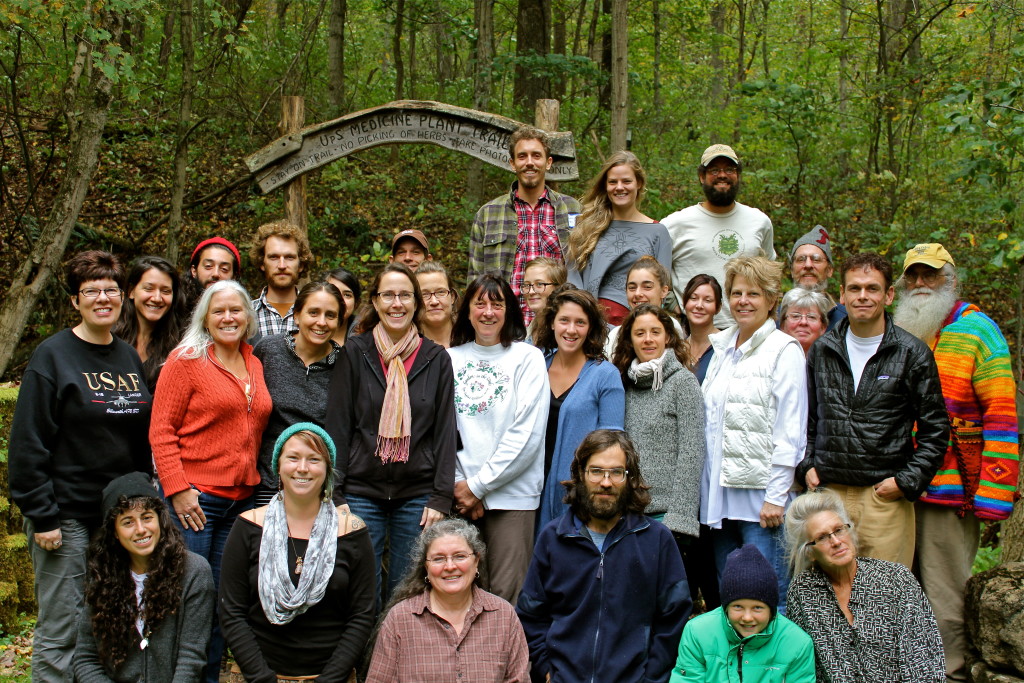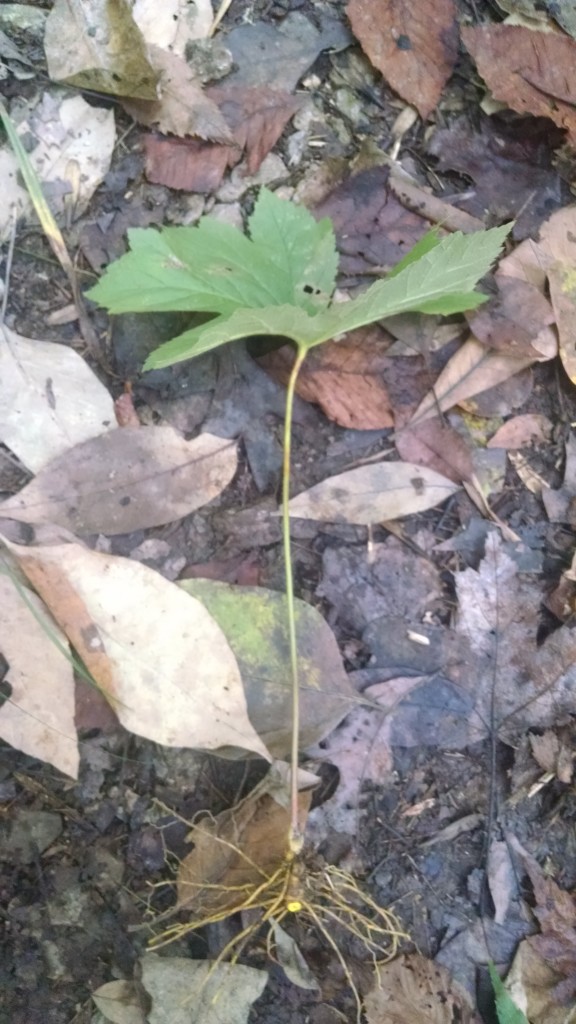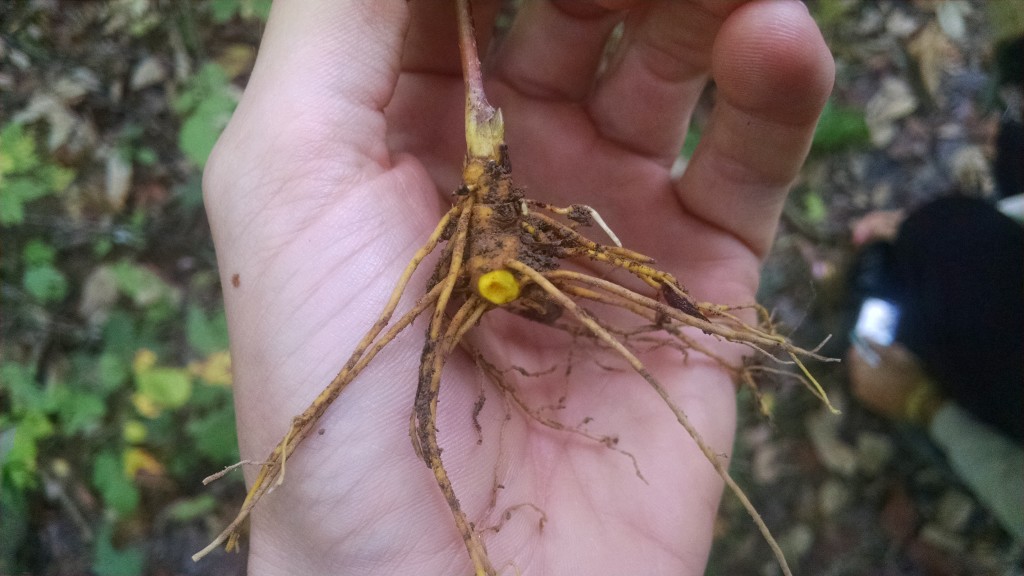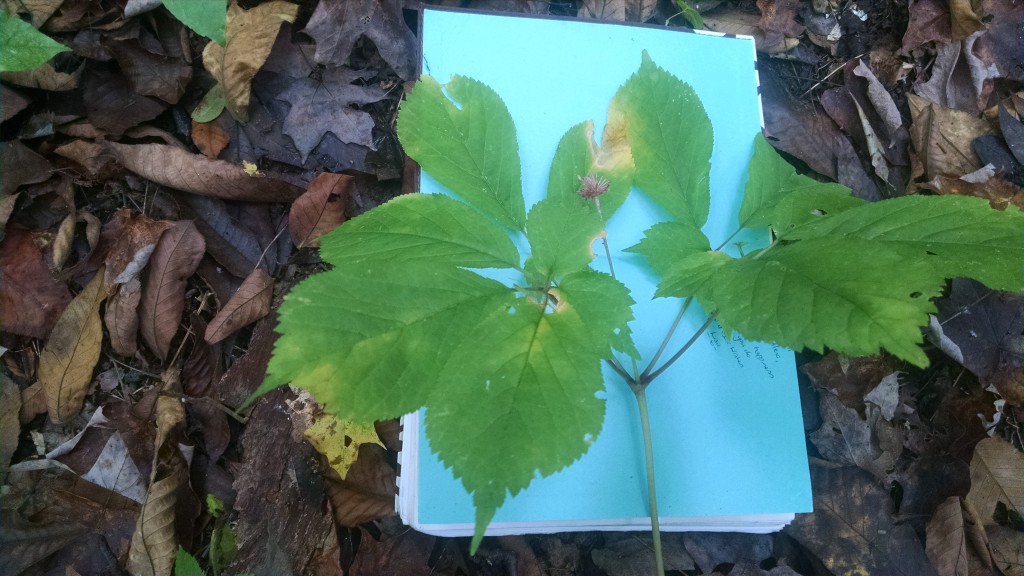
October 1 and 2nd was the First Annual International United Plant Savers “Nurturing Your Botanical Sanctuary, Sacred Conservation” at the United Plant Savers Botanical Sanctuary and Goldenseal Sanctuary in Rutland, Ohio. This workshop brought together landowners and ecological experts from around the US, Polynesia and Canada. Some states represented included Indiana, Massachusetts, Maine, Michigan, Missouri, New York, North Carolina, Ohio, Pennsylvania, West Virginia, and Virginia.
One thing that struck me about the workshop, and the place itself, was the idea of “sanctuary.” When I stepped onto the land, I noticed a calmness about the place. Though the need to provide sanctuaries for medicinal plants is pressing, there was no urgency about the place. Environmentalists often feel anxiety about various environmental issues, but something about the land at UPS seemed to clear this unease. I came to realize this feeling could possibly be attributed to the history of the land and one of its most unique attributes: a few decades ago, the land was the antithesis of a sanctuary.
When Paul Strauss first arrived on the land, it had been literally mined of its potential. Like much of the Appalachians, this area had been exploited for its resources; in this case coal. This place needed a person with a vision, which Paul had plenty of. Paul and many other people over the years have worked ceaselessly to foster the ecological regeneration as documented in the film The Sanctity of Sanctuary. Walking the forests and fields found at the United Plant Sanctuary today, one would be hard pressed to guess what literal dump it was only 40 years prior.

To me, this is what botanical sanctuaries are all about: healing our relationship to the land through the medium of medicinal plants, and therefore healing ourselves. The topics presented during the workshop backed up this idea.
Marc Williams, Executive Director of Botany Everyday and Plants and Healers International, presented about Plants and Healers International and the Plant Allies Network, or PAN. PAN will be a one-stop-shop for finding people and places to learn about all things plant related. Marc also presented an overview of botany. This covered everything from climate zone maps to exotic invasive species to plant family trends. As always, Marc’s presentations were mind expanding and full of useful information.

Alison Ormsby, PhD, explored nature interpretation, signage, and sacred forests around the world. I was particularly interested in the sacred forests. During the summer of 2013, I biked across Europe visiting ancient trees. Certain trees had no signage or significant human dedication, but many of the trees were commemorated with signs and revered by the surrounding community. The forests Alison discussed all held significance to the communities and families around them, and were valued for their spiritual and sometimes economic value. These forests were inspirational for what plant sanctuaries could become: honored ground cared for by the community in exchange for medicinal plants and the opportunity for some superb shinrin yoku.

Lee Ann Woolery, PhD, elucidated and led two fantastic explorations of art and it’s role in botany and connection to nature. The first presentation was an introduction for most of us into the history of nature art and its influence on popular culture. Who knew that Maria Sibylla’s art was some of the finest biological works of the time and that Ernst Haeckel helped to inspire art deco? We then had the opportunity to try our hand at drawing a piece of nature. This was an experience many participants will continue to explore as it opened up perception of nature in unique ways. I found it equally exciting as the module on Goethian Science during my masters at Schumacher College. There is much to be rediscovered in this field.
Susan Leopold, PhD and Executive Director of United Plant Savers, discussed mapping resources, including county soil maps, scientists employed by the county and extension services to interpret data, and “bio-blitzes.” A bio-blitz is when a group of botanists, soil scientists, ornothologists, and naturalists of all sorts spend a day or two on a piece of land helping the landowners to assess their land. This is a very helpful way to figure out best practices for that land. Susan also presented on different land buying strategies such as setting up a land trust. This presentation focused on Emily Ruff at the Florida School of Holistic Living and various studies done at the UPS Sanctuary.
With a focus on the process of creating plant sanctuaries, this workshop helped inspire all who attended to deepen their work with plants and gave them some tools and a network to do so. Plant sanctuaries are a promising way to help with the protection of threatened plants. They can be incredible pieces of land by themselves, but also function as focal points for education and change. If you are interested in learning more about plant sanctuaries and the United Plant Savers, please visit their website and attend this workshop next year! There will hopefully be future workshops of this type in other areas of the country and other parts of the world.